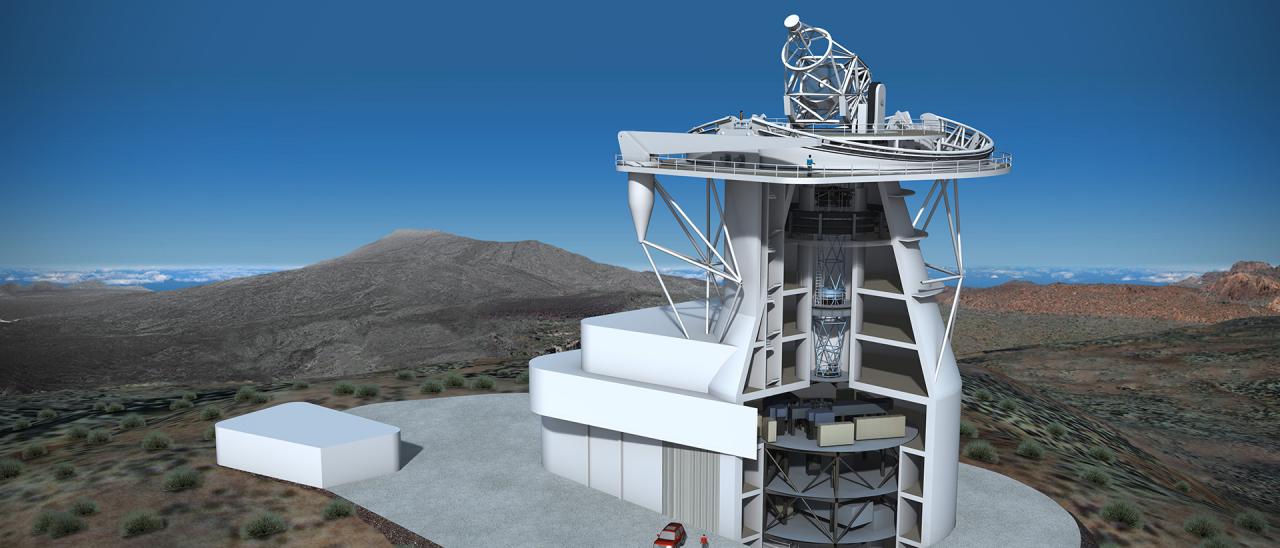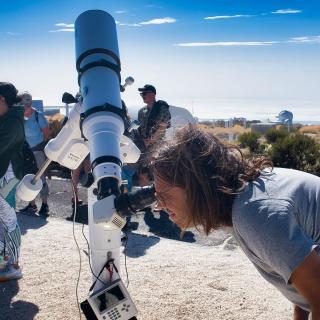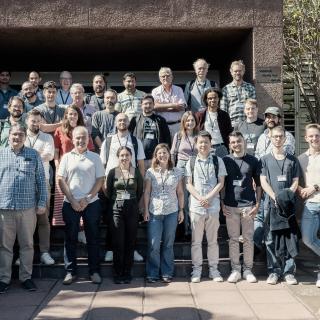The International Scientific Committee (CCI for its initials in Spanish) of the Canary Observatories has given the go-ahead for the siting of the installation of the European Solar Telescope (EST) at the Roque de Los Muchachos Observatory (Garafía, La Palma). The decision, taken at the first of the biannual meetings of the Committee, held virtually, implies the construction of the largest European infrastructure dedicated to solar observations, and the strengthening of the position of the Canaries as the place with the largest concentration of solar telescopes in the world.
The committtee, made up of representatives of all the countries involved in the Observatories, has made a positive evaluation of the proposal by the Project Office of the European Solar Telescope after receiving the recommendations of the Subcommittee for the Astronomical Characteristics of the Canary Observatories (SUCOSIP). The role of the SUCOSIP is to ensure that new infrastructures do not degrade the scientific quality of the Canary Observatories, and reports to the CCI, which takes the decisions on whether to approve the installations on the proposed site.
The EST will be sited in the area of the Swedish Solar Telescope (SST) and the Dutch Open Telescope (DOT) within the Roque de los Muchachos Observatory. The final site for the EST has been decided taking into account the conditions which a solar telescope has to satisfy to optimize its scientific results, avoiding perturbations due to nearby infrastructures. The two existing solar telescopes in a zone already exploited, can give space for the EST which also minimizes the environmental impact of the new installation.
The construction of the European Solar Telescope on La Palma is planned to start in 2023/24, once the necessary funding has been completed. It is hoped that it can see “first light” in 2028/29. The EST will have a primary mirror of 4.2m diameter, and an advanced system of adaptive optics -technology designed to minimize the distortions in the image produced by terrestrial atmospheric turbulence-. This will enable the telescope to resolve structures on the solar surface as small as 30 km across. Thanks to its large mirror and specialized optical design the EST will also be able to measure the Sun’s magnetic field structure with high precision, making striking improvements compared to any present day solar telescope.
The main aim of the telescope, which will give astronomers a better understanding of solar magnetic activity, will be research into the structure, dynamics, and energy flow in the lower solar atmosphere, to understand phenomena such as sunspots and flares with unprecedented accuracy.
The EST will be a technologically unique telescope, and will represent the maximum achievement of European ground-based solar physics. For that reason, since 2016 it is included in the route-map of the European Strategic Forum of Research Infrastructures (ESFRI). The project is promoted by the European Association for Solar Telescopes (EAST), which includes 26 institutions in 18 European countries. Among these, are the Spanish institutions the Instituto de Astrofísica de Canarias (IAC) which coordinates the project and is responsible for several of its work packages, and the Instituto de Astrofísica de Andalucía (IAA) which manages the complete communications package, and has collaborated with the project both scientifically and technologically since it began.
The Observatories of the Instituto de Astrofísica de Canarias (IAC) form a part of the network of Singular Scientific and Technical Infrastructures (ICTS) of Spain.



